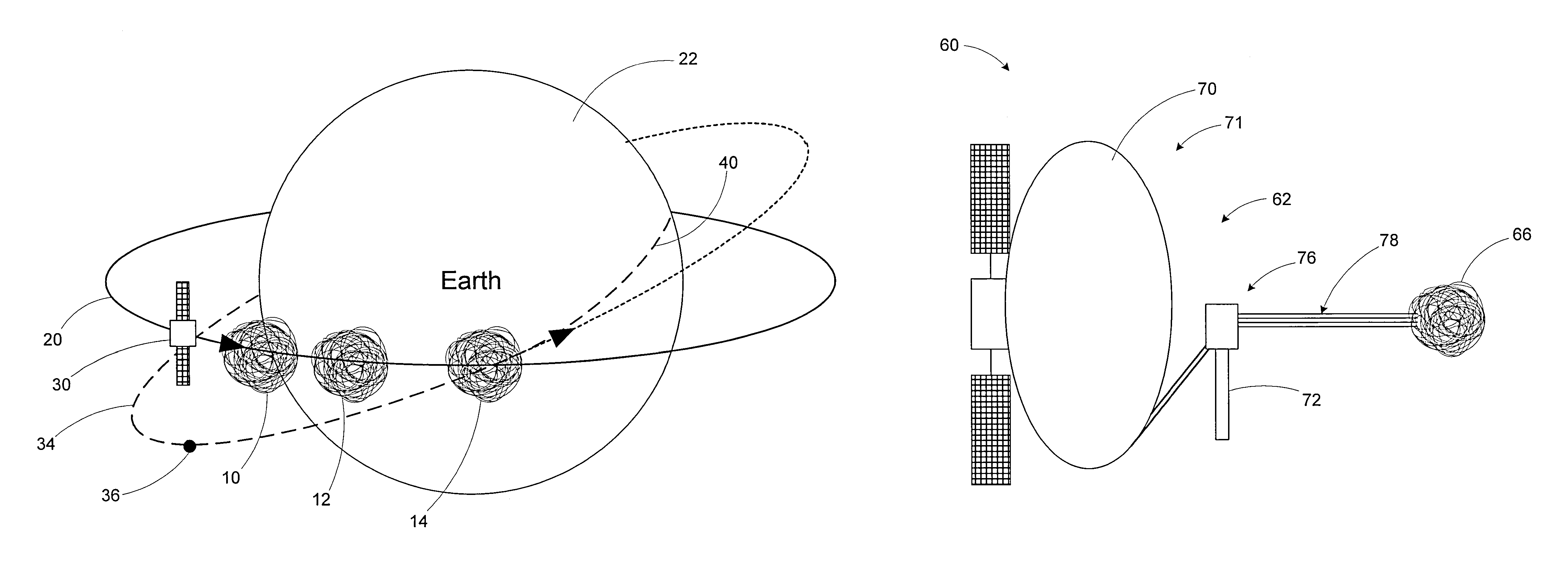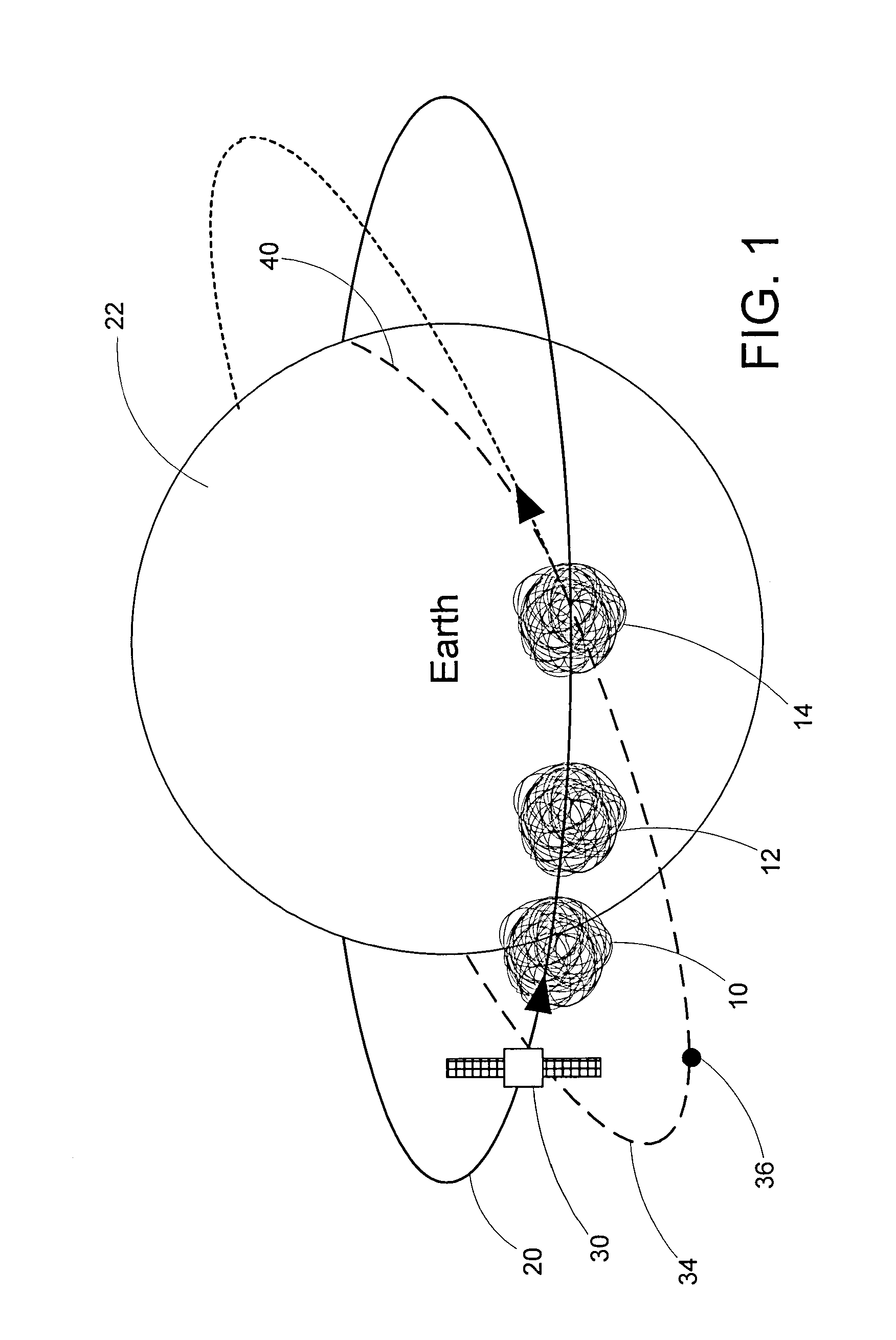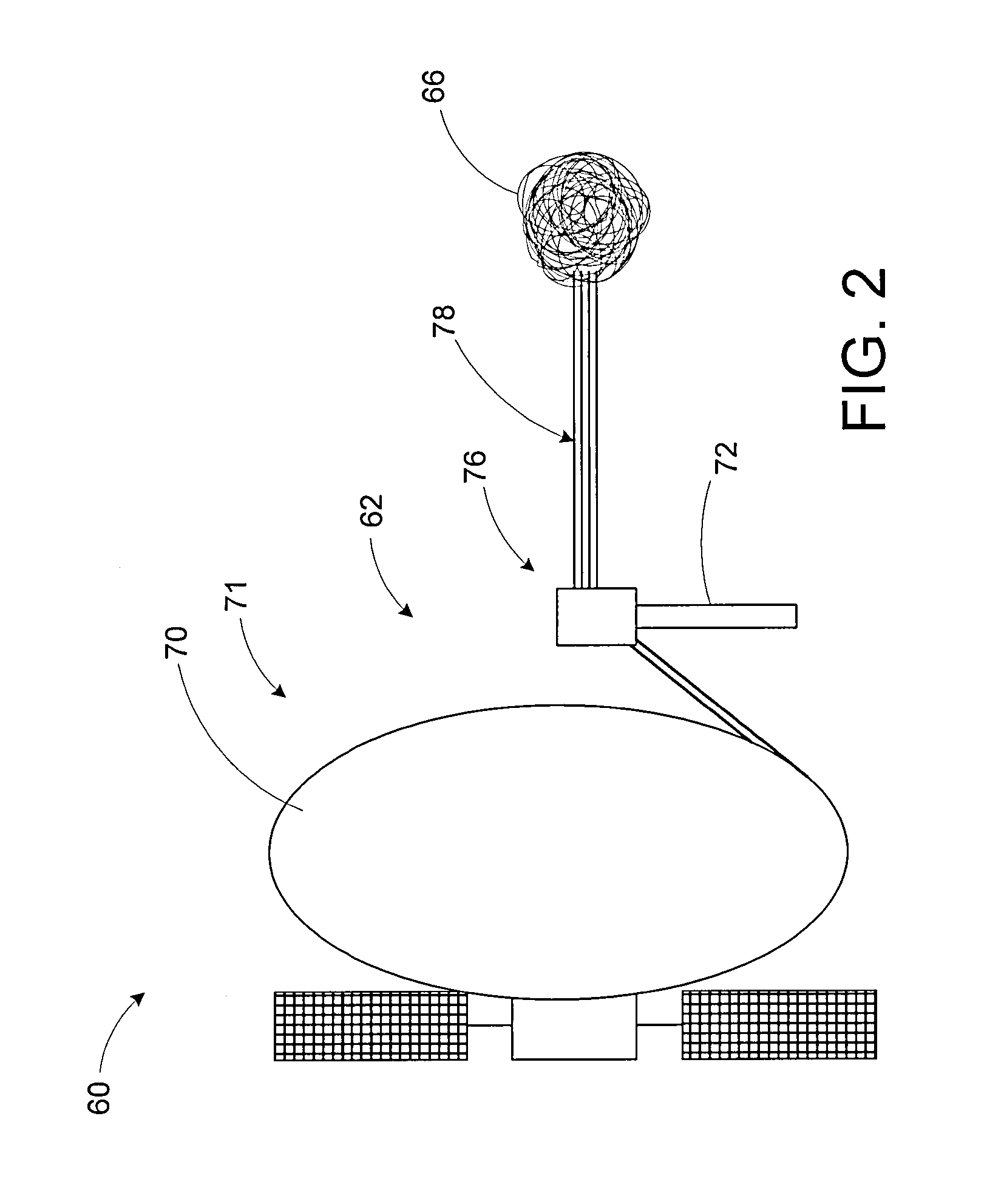Orbital debris mitigation system and method
a technology for orbital debris and mitigation systems, applied in the direction of meteorite protection, transportation and packaging, cosmonautic vehicles, etc., can solve the problems of debris threat, current satellite operations are threatened, orbital debris is a serious threat to the operation of space assets,
- Summary
- Abstract
- Description
- Claims
- Application Information
AI Technical Summary
Benefits of technology
Problems solved by technology
Method used
Image
Examples
Embodiment Construction
[0022]Fiber-based debris interceptors are used to intercept and / or contain space debris. The debris interceptors may be made up of fibers that are formed in space from a material supply on a space vehicle. The fibers may be metal fibers such as aluminum fibers, may be ceramic fibers, such as glass fibers, or polymer fibers, such as NYLON fibers. Fibers may be distinguished by being material in a single continuous strand with a small diameter, such as between 10 and 100 microns or less, which makes individual fibers pose at most a minimal debris threat of their own should they break loose from the debris interceptor. The fibers for the debris interceptors may be formed by extrusion, with a heat source, such as a mirror to focus sunlight, used to heat the material of the material supply that is carried on the space vehicle. The debris interceptor may have a diameter many times that of the space vehicle that produces it. The debris interceptor may be separated from the space vehicle, a...
PUM
 Login to View More
Login to View More Abstract
Description
Claims
Application Information
 Login to View More
Login to View More - R&D
- Intellectual Property
- Life Sciences
- Materials
- Tech Scout
- Unparalleled Data Quality
- Higher Quality Content
- 60% Fewer Hallucinations
Browse by: Latest US Patents, China's latest patents, Technical Efficacy Thesaurus, Application Domain, Technology Topic, Popular Technical Reports.
© 2025 PatSnap. All rights reserved.Legal|Privacy policy|Modern Slavery Act Transparency Statement|Sitemap|About US| Contact US: help@patsnap.com



